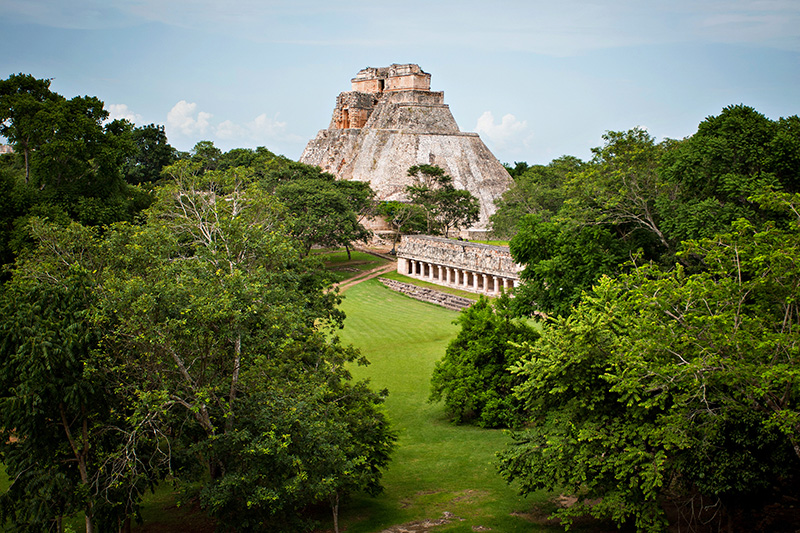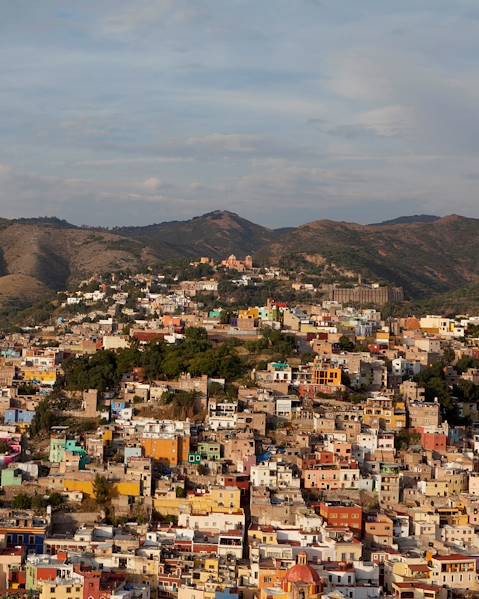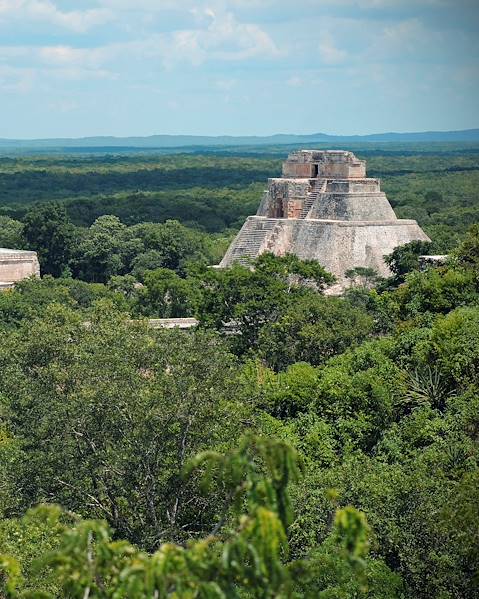Mexico has its distinct climatic zones to thank for its diverse landscape of deserts, jungles, coasts, mountains and volcanoes. Split in two by the Tropic of Cancer, Mexico’s north has a milder temperature climate, while its south enjoys stable temperatures in a tropical weather zone. Variable altitudes also affect average temperatures (the higher the altitude, the lower the temperature). When deciding the best time to visit Mexico, it's important to factor in the wet (or rainy) season between May and October and the dry season from November to April throughout most of the country. Whether your ideal Mexico holiday is spent discovering ancient sites, exploring colonial cities or relaxing on picture-perfect beaches, we’ve got the intel on the best months to visit.
Baja California
Baja California lies between sea and ocean, bordered to the west by the Pacific Ocean and to the east by the Gulf of California. This spot in north-western Mexico provides a dry, largely sunny and warm climate year-round. The north-west of Baja California is both cool and humid, with a climate similar to that in the Mediterranean (the wind from the Pacific also makes the weather very pleasant). In the northeastern extremity of the region, the Mexicali Plain is affected by the desert climate of the United States. This means that while it’ll be warm and sunny for a large period of the year in the northwest of Baja California, in the northeast, summers will be very hot (over 50°C) and the winters cold (below zero). Hence, there’s a diverse range of temperatures, as well as rainfall from December to March, which applies to the whole of the northern part of Baja California.
Southern Baja California has a tropical climate, with a hot, humid period in August and September, during which hurricanes can also occur. The average temperature varies depending on the altitude. In La Paz (12,000ft), the hottest months (but also the rainiest) are July to September (averaging 29°C). The period from March to May is more favourable, with near-zero rainfall and an average temperature of 19-24°C. Conversely, in a city like San Jose del Cabo (which has a very low altitude), temperatures are pleasant all year round (above 20°C from April to November), although the rain does arrive in September, with just over three inches falling on average.
Chiapas
Near the border with Guatemala, Chiapas has a harsh climate, which isn't surprising given it’s the southernmost state in Mexico. As elsewhere in Mexico, the weather will vary depending on the altitude: the hot and humid plains with tropical forests are less subject to differences in temperature than the highlands, with a temperate but relatively cool climate. The mountains are generally misty and humid, and you'll need to travel to the coasts for 'drier' air. The rainy season in Chiapas runs from May to October, while the dry season runs from November to April.
The Atlantic Coast
Although less developed than the Caribbean coastal area, Mexico's Atlantic coast enjoys pleasant temperatures and strong sunshine. December to May is hot, and the rainy season arrives after that (particularly between June and September). There are clear skies on the coasts, thanks to the winds blowing off the Atlantic, which chases away the clouds and helps keep temperatures pleasant. Night-time temperatures average 22°C, with daytime averages of 29°C in some coastal cities in April and May.
The Yucatan
The Yucatan has a tropical climate. As a result, there are two major seasons: the wet season from June to October (with high temperatures), and the dry season from December to March, which is also milder. Visiting the Yucatan in September and October is best avoided, as this is hurricane season. Lastly, be aware that in the Yucatan, the weather will always be warmer and feel more stifling if you venture inland.
The Sierra Tarahumara
The climate in the Sierra Tarahumara varies depending on the altitude. On the plateau (from 6,230 to 7,200ft) and in the canyons, sometimes peaking at 7,870ft, winters are cold, and summers are mild. The area, therefore, has a temperate climate, and the best time of year to visit is from spring to early autumn.
Mexico City
Mexico City has a temperate, high-altitude climate. Although located in an intertropical zone, Mexico City's annual average temperature is largely moderated by its altitude (7,350ft). As in many other places in Mexico, summer is the rainy season, with the average maximum temperature reaching over 23°C from June to September and rainfall exceeding five inches per month. Winter in Mexico City is dry (humidity is around 60% in December and January), with an average temperature of 14°C. Spring sees average temperatures of 18.7°C in April and 19°C in May, as well as limited rainfall; it’s the best time to visit Mexico City.





























